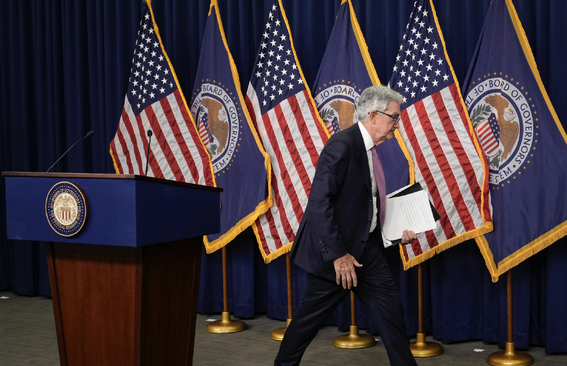
The Federal Reserve will set interest rates Wednesday, with economists predicting one more move higher in its fight against inflation. All 106 economists surveyed by Reuters between July 13 and 18 expect the central bank to raise the target range for its benchmark rate by 25 basis points, to between 5.25% to 5.50%. A majority also expect this increase to be the last in what has been the steepest hike in interest rates since the early 1980s.
Tuesday, July 25:
- The May edition of the S&P CoreLogic Case-Shiller National Home Price Index, which measures home prices across the country, will be released.
- The Conference Board will release its monthly Consumer Confidence Survey, which measures how optimistic Americans are about the economy.
Wednesday, July 26:
- The U.S. Census Bureau will release the number of new building permits issued by the government in June, which is a key housing market indicator.
- The Federal Reserve will announce its next interest rate decision.
- LinkedIn Senior Editor at Large George Anders will release his latest edition of Workforce Insights.
Thursday, July 27:
- The U.S. Census Bureau will release its monthly report on durable goods orders, which measures manufacturing activity.
- The U.S. Department of Labor will release initial jobless claims for the previous week.
Friday, July 28:
- The U.S. Department of Commerce will release June’s Personal Consumption Expenditure Price Index — the Fed’s preferred inflation measure.
By Cate Chapman, Editor at LinkedIn News
Fed’s last rate hike coming at July meeting, economists say: Reuters poll

S/Sarah Silbiger/File Photo
BENGALUR July 19 (Reuters) – The U.S. Federal Reserve will raise its benchmark overnight interest rate by 25 basis points to the 5.25%-5.50% range on July 26, according to all 106 economists polled by Reuters, with a majority still saying that will be the last increase of the current tightening cycle.
A resilient economy and historically low unemployment well over a year since the Fed began one of its most aggressive rate hiking campaigns in history has repeatedly confounded analysts and investors.
The current debate is whether more rate increases might be needed to ensure “disinflation” continues or if doing more could cause unnecessary damage to the economy.
The view that rates will stay higher for longer appears to be gaining traction, with the share of respondents polled during the July 13-18 period who predicted at least one rate cut by the end of March next year down sharply to 55% from 78% last month.
“We do not want to rush ahead and say the fight against inflation has been won, as we have seen head-fakes in the past.”
Economists and financial market traders appear to still be slightly out of step with the Fed.
The latest “dot-plot” projections from members of the central bank’s policy-setting Federal Open Market Committee suggest the benchmark overnight interest rate will peak at 5.50%-5.75%, but only 19 of 106 economists polled by Reuters forecast it will reach that range.
Expectations the Fed is nearing the end of its hiking cycle have pushed the dollar to its lowest level in more than a year against major currencies. A weaker greenback is likely to make imports costlier and keep price pressures elevated.
Indeed, economists are still concerned that inflation might not come down quickly enough.
Core inflation, which strips out food and energy prices, will be only slightly lower or remain around the current level of just under 5% by the end of the year, 20 of 29 respondents to an additional question in the poll said.
The Fed targets inflation as measured by the Personal Consumption Expenditures index (PCE) at 2.0%, last reported at 3.8% for May.
But none of the inflation gauges polled by Reuters – CPI, core CPI, PCE and core PCE – were expected to reach 2% until 2025 at the earliest.
“While the latest figures are encouraging, the real battle begins now, as the easy base effects are now behind us,” said Doug Porter, chief economist at BMO Capital Markets, referring to the fact inflation plunged so much in June partly because it was so elevated at the same time last year.
“As the disinflationary force of lower energy prices fades, that will leave us dealing with the underlying 4% trend in core … (and) to truly crack core will likely require a more significant slowing in the economy.”
The strong labor market is only expected to loosen slightly, nudging up the unemployment rate to 4.0% from the current 3.6% by the end of 2023, the poll showed.
A slight majority of economists who answered an additional question, 14 of 23, said wage inflation would be the most sticky component of core inflation.
Nearly two-thirds of respondents to a separate question, 27 of 41, expected a U.S. recession within the next year, with 85% of them saying it would start at some point in 2023.
Still, the economy was expected to grow 1.5% this year, up from the 1.2% predicted a month ago, and then slow to 0.7% next year.
(For other stories from the Reuters global economic poll:)

